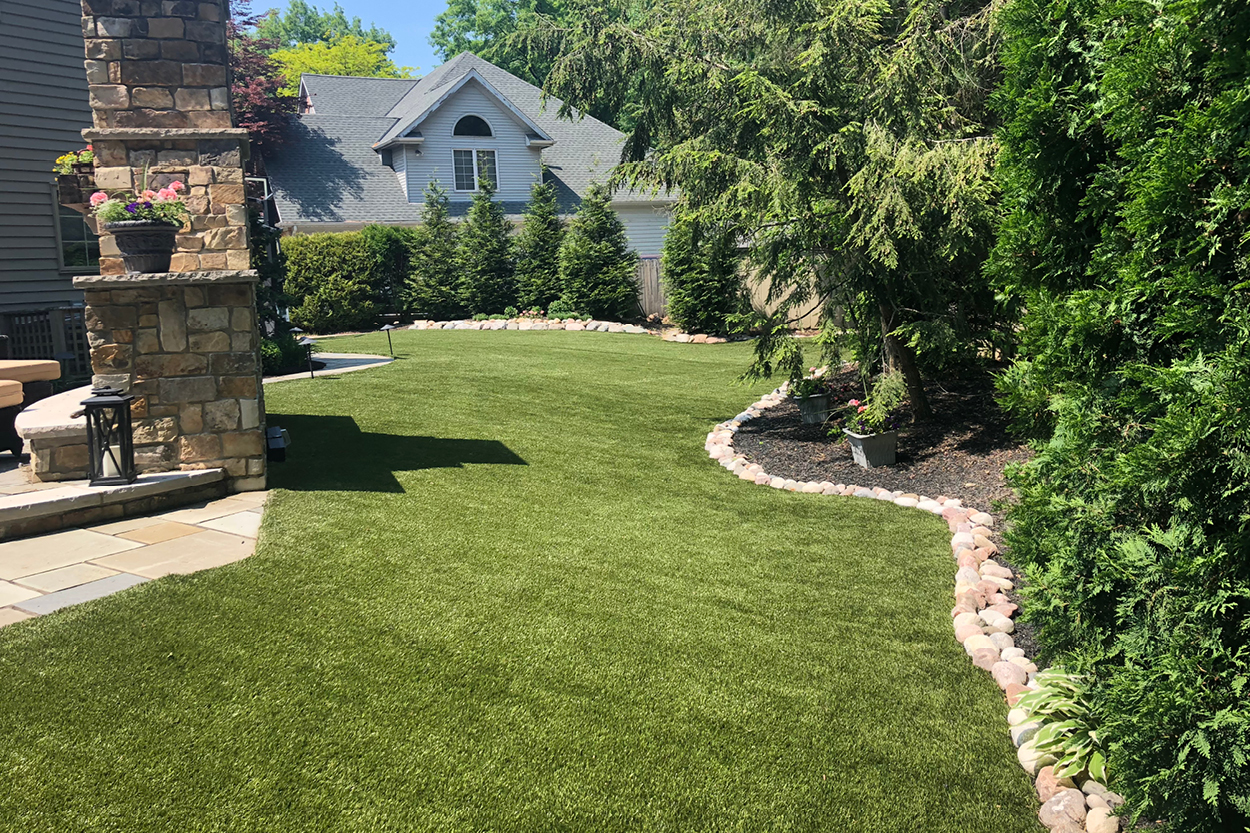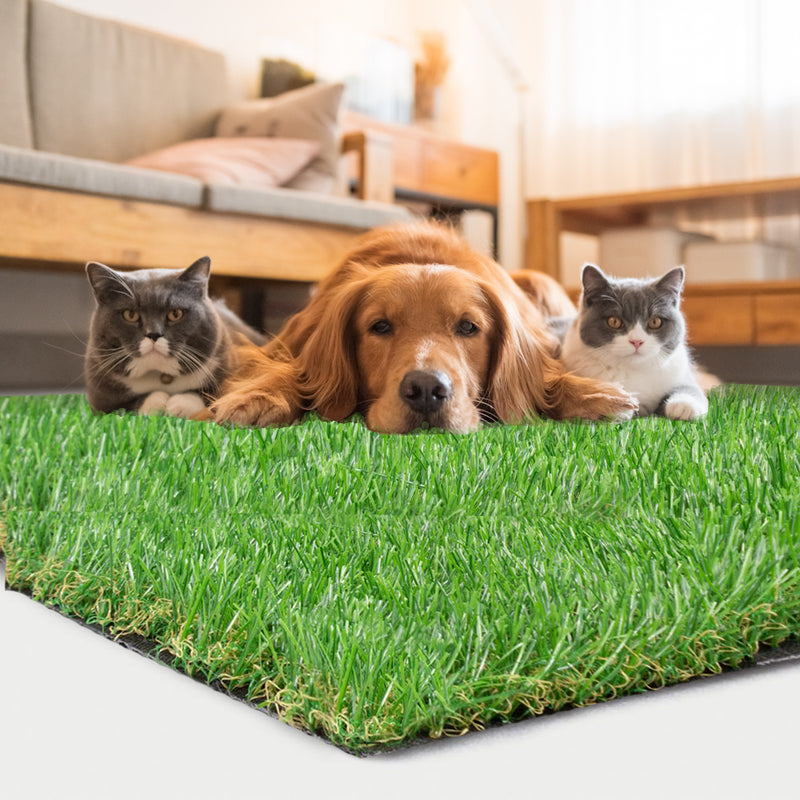Look Into the Environmental Conveniences of Opting for Artificial Turf Solutions
The fostering of artificial turf remedies offers a compelling opportunity to attend to pushing environmental obstacles. By significantly lowering water usage and decreasing the application of dangerous chemicals, these alternatives not only advertise lasting landscaping but also protect regional ecosystems.
Water Preservation Advantages
One of the most substantial benefits of synthetic grass is its ability to preserve water. Standard lawn lawns require substantial irrigation, particularly in locations vulnerable to drought or water restrictions. In contrast, fabricated grass does not require watering, significantly reducing the general need for water resources. This function is especially beneficial in dry regions where water shortage is a pushing problem.
By eliminating the demand for normal watering, artificial grass adds to sustainable landscape methods and helps mitigate the ecological impact of too much water usage. Additionally, the conservation of water prolongs to the decrease of drainage, which can result in dirt disintegration and river air pollution.
Furthermore, the setup of artificial grass enables districts and homeowners to designate water resources more effectively, focusing on essential usages such as alcohol consumption water and agriculture. The shift towards synthetic grass not only promotes accountable water usage however likewise aligns with wider ecological goals focused on preserving natural sources.
As areas significantly prioritize sustainability, the water conservation benefits of synthetic grass offer a compelling case for its fostering in residential and industrial landscaping tasks.
Lowered Chemical Usage
The change to artificial grass dramatically lowers the reliance on chemical therapies typically utilized in all-natural yard maintenance. Conventional turf monitoring usually involves the application of herbicides, chemicals, and plant foods to promote growth and control bugs. These chemicals can position risks to human health and wellness, regional wildlife, and the environment, adding to dirt and water contamination.
In contrast, fabricated turf eliminates the demand for these damaging substances. By decreasing the release of artificial substances into the ecological community, synthetic lawn promotes much healthier dirt and water systems.
Additionally, the absence of chemical runoff related to synthetic grass installments aids shield local waterways from air pollution, sustaining aquatic life and preserving biodiversity. Phoenix turf companies. As communities increasingly focus on sustainable practices, going with artificial turf offers a feasible option that straightens with environmental preservation goals. Via this change, property owners can appreciate rich green rooms without endangering eco-friendly health and wellness, leading the way for an extra sustainable future
Reduced Carbon Footprint

In addition, the installation of synthetic grass can cause substantial water preservation. All-natural lawns require considerable amounts of water for watering, which not only includes to the carbon impact related to water removal and treatment but additionally strains neighborhood water resources. In comparison, man-made lawn needs very little upkeep, requiring no watering, therefore dramatically lowering water usage and its connected energy prices.
In addition, the longevity of synthetic grass contributes to its decreased carbon impact. With a lifespan of as much as 15 years or even more, the need for frequent replacements is reduced, causing much less waste and reduced energy consumption in production and dealing with standard lawn choices. Generally, man-made lawn provides a lasting option for environmentally conscious landscaping.
Environment Conservation
Environment conservation is a critical factor to consider in the argument over landscaping choices, specifically when contrasting synthetic grass to natural lawn. Natural grass yards typically call for substantial maintenance, including the usage of chemicals, fertilizers, and herbicides, which can detrimentally influence neighborhood communities. These chemicals can leach right into the dirt and rivers, harming indigenous vegetation and animals and interrupting regional habitats.
Artificial grass gets rid of the demand for dangerous chemicals, thereby protecting close-by wildlife and preserving the integrity of surrounding ecological communities. The installation of man-made turf can lead to the conversion of previous lawn locations into more biodiverse landscapes, such as pollinator yards or native plant areas, which can support local wild animals.
Ultimately, the change to synthetic grass not just saves water and minimizes maintenance initiatives however likewise promotes a more harmonious partnership in between human activities and the native environment, advertising environment preservation while doing so.
Long-Term Sustainability
Lasting sustainability is a crucial consider evaluating the advantages of synthetic grass over traditional yard yards. Among one of the most have a peek at this site substantial benefits of synthetic grass is its toughness; it can last approximately 15-20 years with very little maintenance, whereas all-natural yard needs constant reseeding and replacement. This longevity minimizes the requirement for continuous resources, such as water, plant foods, and chemicals, which are crucial for preserving a healthy grass lawn.
Furthermore, synthetic grass adds click to a reduction in carbon discharges connected with grass care tools. Traditional grass usually require gas-powered lawn mowers, trimmers, and blowers, all of which add to air contamination. Artificial turf companies phoenix. In contrast, synthetic grass gets rid of the requirement for such equipment, advertising a cleaner environment
Furthermore, the production of fabricated lawn increasingly uses recycled products, improving its sustainability account. As suppliers adopt eco-friendly techniques, the ecological impact of artificial grass continues to lessen.

Conclusion
The adoption of synthetic grass services provides considerable environmental benefits, consisting of considerable water preservation, decreased reliance on hazardous chemicals, and a reduced carbon impact. Man-made lawn aids in protecting natural environments by lessening land disruption and promoting long-lasting sustainability with the usage of long lasting materials. Jointly, these factors highlight the potential of synthetic grass to contribute positively to environmental health and offer a viable alternative to typical landscaping techniques in a significantly resource-conscious world.
In comparison, artificial grass does not require watering, considerably lowering the his comment is here overall need for water resources. By lessening the release of synthetic compounds into the community, synthetic grass advertises healthier soil and water systems.
In addition, the installment of man-made grass can result in significant water preservation. In comparison, man-made lawn requires minimal maintenance, calling for no watering, therefore significantly lowering water use and its connected energy costs.
